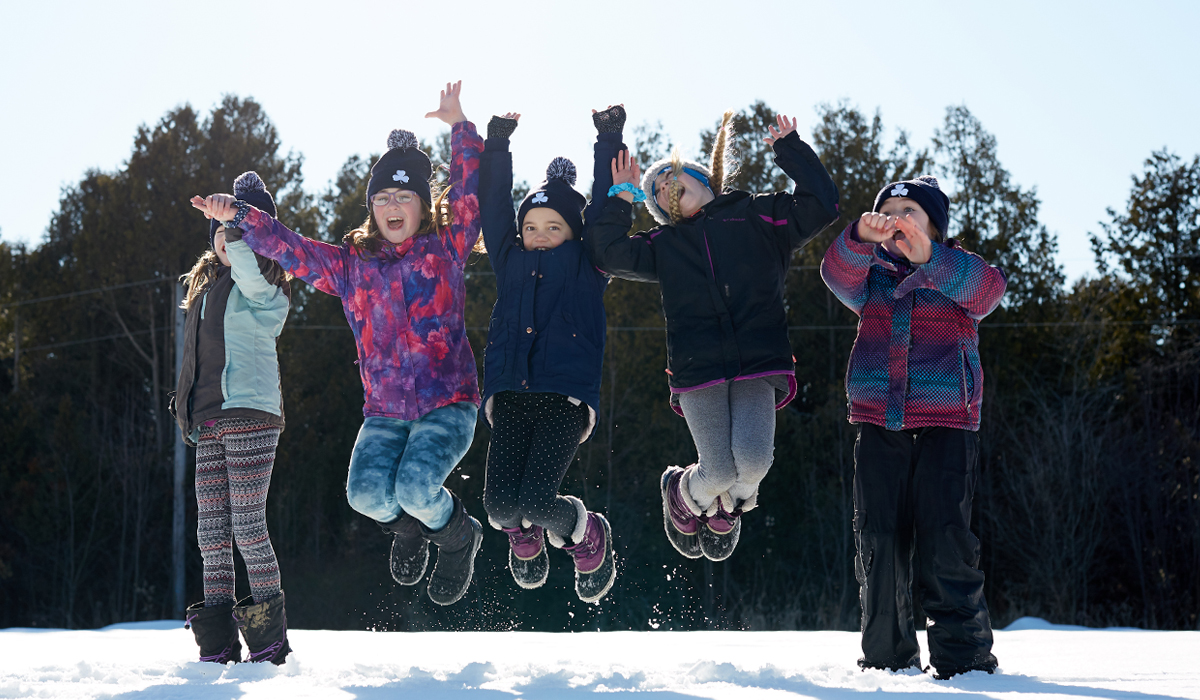Program planning starts with an idea – a spark that with a little time and effort can quickly become a heart-warming campfire. This is exactly what happened with the bat house project for the 157th Guide unit in the Calgary area.
Leaders with cups of tea sat around a table going through the program that needed to be covered for the coming year and up came the Beyond You, Try New Things Section and the conversation went something like this:
“How about we have the girls build something with hammers and nails?”
“Perhaps a bird house?”
“I read something about bats, what do you think about a bat house?”
“Sure let’s do it!”
This was the spark that started our unit’s bat house project. Bat house construction was put on our meeting schedule, followed by enlisting a volunteer to cut boards and to teach the girls how to make bat houses.
The flames of the fire were growing as leaders started searching for information on bats and bat houses. A bat house design was chosen and information sheets were prepared for the meeting. When the girls heard they’d be building bat houses, their enthusiasm only provided more fuel for the fire.
Meeting time arrived, bat information sheets were dispersed and we discussed bats. Much to the surprise of the leaders, the girls embraced the project. They weren’t scared of the possibility of encountering a bat, surely most of them had read the Twilight series and heard about vampires and bats and their wicked ways! They saw bats as cool creatures; after all they eat mosquitoes. One girl even thought they were cute! Success! Perhaps it was the information sheets, at least the leaders like to think so.
The fire that started with a spark is now becoming a raging blaze; hammers, nails, boards, and other construction material was being transformed into bat houses. Many of the girls started tentatively; they had never held a hammer before and its weight felt uncomfortable in their hands. However, before long the tools no longer felt foreign and the construction proceeded with a new-found confidence.
The night did not go flawlessly, there were a few fingers hammered some boards nailed in the wrong spots and a slight design modification was needed mid-stream.
Learning to overcome obstacles is all part of the process, part of the learning.
We have reached our goal – Yahoo! Each patrol worked as a team to build a bat house ready for its winged residents. They are amazed at what they have created in an hour and a half. Their pride for their accomplishment adds more fuel to the fire. Time for the fire to wither away and become ashes as the project is done.
Wait, not so fast – the leaders come forward with more fuel for the fire, a plan to hang the bat houses at camp. The bat houses were hung with care in locations determined to be favourable to bats (they don’t like their houses in trees). The project is now complete but the fire continues to burn gently. The bat houses remain at the campsite and remind the girls, leaders, and other camp visitors how a spark can be turned into a gentle warm fire.
Of course the fire will grow to be its warmest when we discover that bat families have made their home in our bat houses.

By guest blogger Guider Shannon Jaeger, Calgary Area. This article/blog originally appeared in the GGC Alberta’s BluePrint publication.
Bat House Information Sheet
A note to Guiders, as this project involved learning about bats and providing a home, it covered several Guide program areas:
- Beyond You, Try New Things, #2 Find out how to use basic tools
- Beyond You, Learn About Our Environment, #2 Learn about an organization or person who is a leader in promoting a healthy environment
- Guiding And You, Be Involved In Your Community, #4 Participate in a Green Connection environmental service project
A couple of great resources for information about bats and bat houses are the Environment and Sustainable Resource Development’s website.
The US National Parks website.
Bat Trivia
- Bats eat insects! A single little brown bat can catch 600 mosquitoes in one hour. They do their hunting in the evening
- Some bats migrate, but most of the bats in Alberta hibernate in caves, walls or attics in the winter
- Female bats live in colonies and in late May/early June they give birth to one or two pups (babies).
- Animals that eat bats include: owls, cats, skunks, snakes and raccoons.
- Bats roost in trees, buildings or caves. At night they roost in packs to stay warm.
- Big brown bats are reported to reach flying speeds of up to 65 km/h.
- The two most common types of bats around the Calgary area are the little brown bat, big brown bat, and the silver-haired bat.
- Bats live about 6 to 7 years, but can live more than 10 years.
- They sleep a lot, almost 20 hours a day to conserve energy for hunting.
- Bats use sound to find their prey by emitting a sound and listening for the sound to return to them after bouncing off of they pray.
Bat House Construction
In case you are interested in making your own bat house …
It’s best to get the house plans and follow them.
Materials you’ll need to buy
- 2 pieces of (4’x4’) and 1” thick outdoor grad plywood
- 2 pieces of 1”x6”x8’ pine or cedar
- Mesh, HDPE plastic netting 7’x36”
- Nails
- Acrylic caulking
- Staples
- Tools (table saw, hammer, caulking gun)
Installing
- DO NOT hang in tree or shady area. Make sure the house receives 6 to 8 hours of sunlight each day
- Mount at least 12 feet above the ground
- Hanging the house near a pond or stream may increase the chances of attracting bats
- Clean the bat house each winter (bats will be hibernating elsewhere)






















Leave a Reply